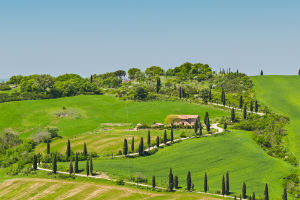Birds are one of the most widely distributed and vibrant animal groups in nature. Birds have gorgeous feathers, gentle sounds, and complex behaviors. At the same time, many bird day activities have made them one of the closest animals of human beings and have attracted much attention and love, and have also become an important object of many zoologists' research.
Birds, like fish and mammals, are a large family of vertebrates. There are many types and different shapes. In the long evolutionary process, birds have produced a variety of different ecological groups in order to adapt to various complex environmental conditions in nature. The existing number of birds in the world birds are still increasing, and it has exceeded 10,000 species.
The classification of birds is very complicated, and it is a very difficult task to recognize birds one by one in accordance with the classification system of the Phyla Gangenae, which requires a long learning process.
Therefore, in order to simplify the bird classification system and facilitate hobbyists and beginners to better understand birds, we can divide birds into six ecological groups according to their behavior. They are land birds, swimming birds, wading birds, climbing birds, raptors, and songbirds.
Birds not only have strong color sense but also stronger vision than humans. The eye muscles of the birds are very powerful, and the crystal shape can be flattened or squeezed into a circular shape so that the eyes of the birds become a binding of a telescope+magnifying glass.
In addition, birds have more visual cells than humans. Hawks, for example, have 1.5 million visual cells in the center of their retina. With only 200,000 humans, it's no wonder that falcons have excellent eyesight.
Birds are an important part of the ecological natural system, and each species directly exists in the relationship between the food chain. They are interdependent and maintain the balanced development of the ecology. For example, after the birds are eating fruit, the feces are scattered in various places, and trees can get healthy growth in a suitable environment.
Birds also help plants to spread seeds while getting food. There are also some birds that are important roles in plant pollen, such as hummingbirds, honeybirds, sunbirds, yellow birds, etc. If the update of these bird plants will be hindered, the balanced order of ecology will be severely disturbed.
A bird is nearly eating 50,000 pests a year, which can protect 500 degrees acres of agriculture without the impact of pests. An owl can kill more than 1,000 mice in summer and protect farmland. A pair of woodpeckers can protect 800 hectares of deep forest area, which is a well-deserved deep forest guard. Woodpecker is a natural enemy of pests, and we are responsible for protecting birds.
Birds are very sensitive to changes in the ecological environment, they can respond the first time, and it is easy to observe and study. So scientists use birds as a measure of the ecological indicators of an area.
In some countries, birds are included in the environmental education curriculum, and more knowledge of bird protection is propagandized to guide the public's conscious awareness of ecological protection and improve the protection of birds and wild animals.


